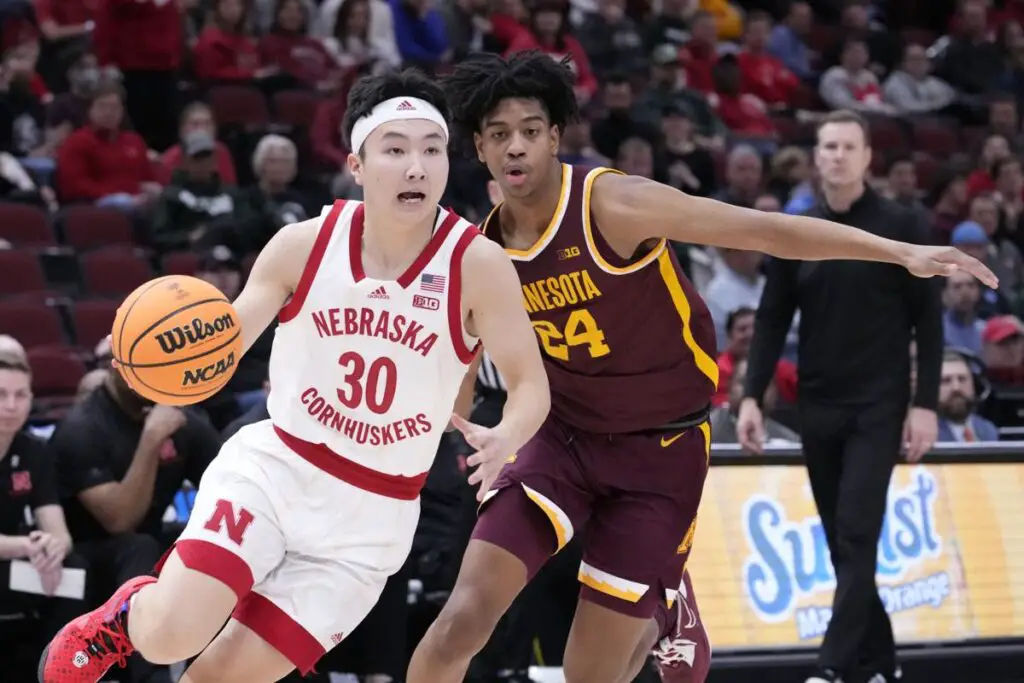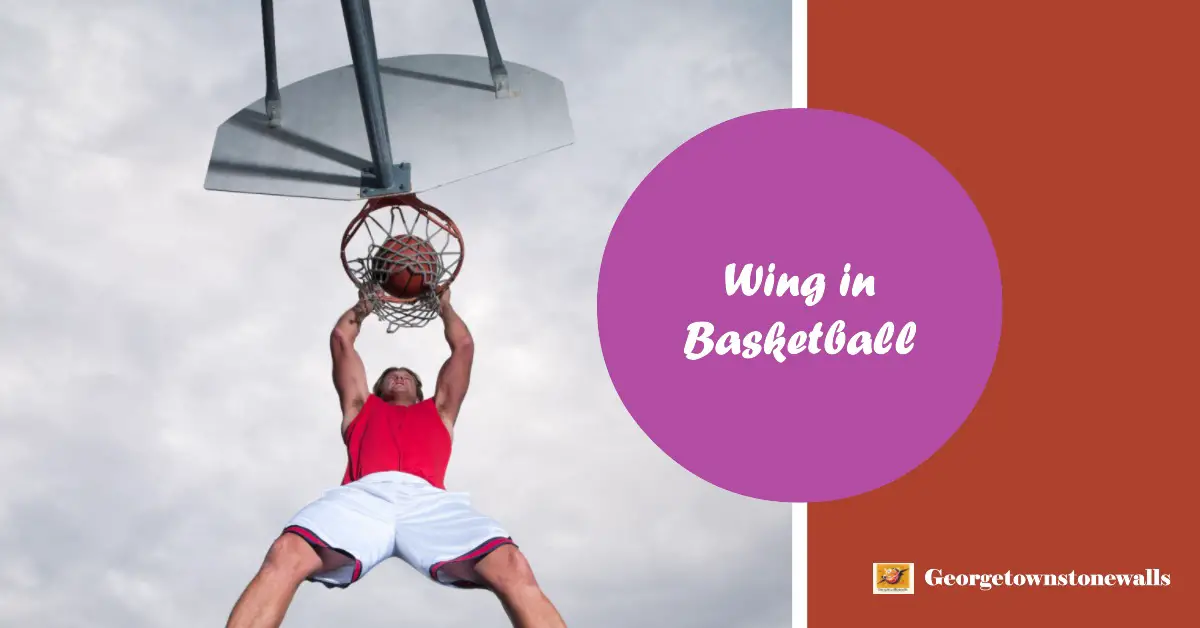What Is a Wing in Basketball? Understanding the Strategic Position and Impact on Court Dynamics. A wing in basketball refers to a player positioned on the side of the court. Wings are versatile, often playing as shooting guards or small forwards.
In the fast-paced world of basketball, the term ‘wing’ is synonymous with agility and adaptability. These players embody a blend of speed, shooting ability, and ball-handling skills. With roles that straddle the perimeter and the paint, wings are pivotal in both offensive strategies and defensive matchups.
Known for their capacity to switch between multiple positions, they frequently take on scoring, playmaking, and rebounding tasks. Their court vision allows for dynamic ball movement, opening up scoring opportunities and enhancing the team’s overall fluidity. Catering to fans and enthusiasts seeking a deeper understanding of the game, it’s crucial to recognize the integral role that wings play in basketball’s complex strategic landscape.
The Role Of A Basketball Wing Player
On the dynamic basketball court, a wing player stands out as the versatile key to unlocking complex offensive and defensive strategies. This multifaceted position, often referred to as the small forward (SF) or shooting guard (SG), combines agility, precision, and a well-rounded skillset to dominate the perimeter. Let’s delve into the ins and outs of the wing position in basketball and explore what makes a wing player such a critical asset to their team.
Understanding The Wing Position In Basketball
The wing position signifies a crucial spot located on the sides of the basketball court. This is where wing players often hover, poised and ready to spring into action. Their unique placement on the floor affords them opportunities to influence the game in various capacities, be it through sharpshooting, deft ball-handling, or assertive defense.
Typically, wing players are expected to be extremely adaptable, capable of switching between positions and taking on contrasting roles as the situation demands. It’s their ability to embrace this fluidity that often becomes the x-factor in crucial game moments.
Responsibilities And Skill Set Of A Wing Player
A wing player’s responsibilities are as varied as the tactics employed by a master chess player. Here’s a brief overview of what’s expected from these players on the hardwood:
- Scoring: From beyond the arc to mid-range jumpers, wing players provide a consistent offensive threat.
- Defense: With a blend of speed and length, they defend against both perimeter and slashing threats.
- Rebounding: Wings assist in grabbing boards, especially on the offensive end to maintain possession.
- Playmaking: Beyond their scoring prowess, they often serve as secondary or tertiary ball-handlers.
The skill set required for a wing player is quite extensive:
| Attribute | Details |
|---|---|
| Shooting | A good wing player must possess the ability to score, especially from long-range. |
| Ball Handling | They should be able to navigate tight defenses and maintain poise under pressure. |
| Physical Fitness | A wing player must exhibit endurance and strength to compete at both ends of the court. |
| Defense | Quick feet and an intuitive understanding of angles are a must for effective defense. |
Wing players are the jack-of-all-trades in basketball, and teams often revolve their strategies around these vital cogs to tilt the scale in their favor. A wing player with a robust portfolio of offensive and defensive tools can significantly impact the outcomes of games, making them invaluable members of any basketball team.

Mastering the role of a wing player in basketball means understanding the nuances of offensive strategies that can turn the tides of the game. A wing player, often positioned between the guards and the big men, has a unique blend of skills that enable them to be a versatile threat on offense. From explosive scoring opportunities to utilizing their speed and agility, wing players have various techniques at their disposal to outmaneuver defenders and contribute significantly to their team’s offensive output. Let’s dive into how wing players can maximize their impact on the court.
Scoring Opportunities For Wing Players
For wing players, scoring is a pivotal aspect of their offensive role. Here are some key tactics they employ:
- Cutting to the basket for layups or dunks when a defender loses focus.
- Using screen-and-rolls or screen-and-pops to create open shots.
- Isolating against slower defenders to drive or pull up for mid-range jumpers.
- Executing catch-and-shoot opportunities from beyond the arc, especially in the corners – areas wings often exploit.
Success as a wing scorer often relies on versatility and an unyielding desire to find and create scoring chances, regardless of the defensive setup.
Utilizing Speed And Agility On The Wing
Effective wing players leverage their speed and agility to stretch the defense and generate offensive opportunities. By doing so, they can:
- Quickly transition from defense to offense, racing down the court for fast-break points.
- Execute sharp crossover moves and change of pace dribbles to penetrate the defense.
- Exploit mismatches,
- Outmaneuver slower defenders
Agility on the wing also includes the mental quickness to recognize openings in the defense and to make swift decisions, such as when to pass to a teammate or take the shot oneself. °Effective wing players combine physical agility with sharp decision-making to provide their teams with a dynamic offensive edge.
Defensive Maneuvers And Court Dynamics
The role of a wing player in basketball is not limited to scoring or assisting; defensive prowess is just as crucial to the team’s success. In the Defensive Maneuvers and Court Dynamics of the game, the wing takes on a pivotal responsibility that intertwines agility, awareness, and tactical acumen. Understanding how these athletes maneuver themselves to disrupt the opposition’s flow and secure their own team’s advantage is essential to appreciate the full spectrum of their role on the court.
Guarding The Perimeter And Blocking Passing Lanes
Being on the wing requires a player to possess a unique combination of speed and strength, allowing them to guard the perimeter effectively. This involves shadowing the offensive players and making it challenging for them to receive passes or find open looks at the basket. The wing must be able to read the game, anticipating where the ball is going to ensure they are in the optimal position to disrupt play.
- Stance and Footwork: A crucial aspect of guarding is maintaining a defensive stance that enables quick lateral movements to stay in front of the offensive player.
- Hand Positioning: Raising hands to obstruct the opponent’s vision and deter passes or shots is essential.
- Communication: Constantly communicating with teammates is vital to covering all threats effectively and for a seamless switch of marks when necessary.
By maintaining a potent presence on the perimeter, the wing player helps in blocking passing lanes, forcing turnovers, and initiating a counterattack. They must seamlessly balance between applying pressure on ball handlers and stepping back to intercept passes, requiring a keen understanding of the game’s ebb and flow.
Transitioning From Offense To Defense On The Wing
One of the critical aspects of being a successful wing player is an effective transition from offense to defense. As soon as possession is lost, the wing must rapidly shift focus and retreat, often racing alongside the fastest members of the opposing team to counter quick breaks. This transition phase demands an impeccable sense of timing and extraordinary stamina.
| Transition Phase | Responsibility | Threat Mitigation |
|---|---|---|
| Immediate Response | Quick identification of the change in play and reacting by sprinting back. | Prevents opponents from exploiting open spaces. |
| Defensive Matchup | Identify the player matchup and positioning accordingly. | Reduces chances of mismatches leading to scoring opportunities. |
| Communication | Alert teammates of potential threats during the transition. | Ensures coordinated defensive efforts and no opponent is left unchecked. |
During this high-octane switch, the wing must prioritize defensive integrity while recognizing opportunities to steal the ball or draw charges. The duality of this role underscores their importance in maintaining the equilibrium between relentless offense punching and steadfast defensive shielding. It is this dynamic nature of the wing position that can often tip the scales in a closely contested basketball game.
Tactical Positioning And Movement
In the dynamic world of basketball, a player occupying the wing position takes on a critical role that combines agility and strategic prowess to outmaneuver opponents. Tactical Positioning and Movement are vital to maximizing the effectiveness of the wing, where players must blend their physical skills with cognitive insights of the game. As we delve deeper into this significant role, we’ll explore how wings create vital spacing and passing lanes, along with reading the defense to make strategic cuts toward the basket.
Creating Spacing And Passing Lanes On The Wing
Effective spacing on the basketball court is a cornerstone for offensive success. It’s all about maintaining enough distance between players to force the defense to spread out, creating lanes that facilitate passing and dribbling. Wing players excel in leveraging spacing to open up the floor, an aspect that is essential in today’s game that emphasizes ball movement and perimeter shooting.
- Stretched Defense: By positioning themselves wisely along the boundaries of the three-point line, wings can stretch the defense, paving the way for inside players to operate with more room.
- Dynamic Passing Angles: Being on the wing offers a unique vantage point to spot teammates’ movements and establish passing angles that are less predictable and harder to defend.
- Drive Opportunities: With the space created, wings often exploit gaps for driving towards the basket, compelling defenses to collapse and opening up perimeter shots for shooters.
Wings must constantly assess the floor configuration, ensuring there is ample space for play development and avoiding congestion that can lead to turnovers.
Reading The Defense And Making Strategic Cuts
Reading the defense is like chess on hardwood; it’s a skill that separates good players from great ones. Wings need to have an exceptional understanding of defensive schemes and player tendencies to exploit them effectively.
| Defense Type | Action by Wing |
|---|---|
| Man-to-Man | Utilize quick first-step and screens to make sharp cuts, creating separation from the defender. |
| Zone Defense | Identify gaps in the zone, cutting into spaces that force defenders to make decisions, often leading to open shots or mismatches. |
| Switching Defense | Anticipate the switch and accelerate or decelerate strategically to gain an advantage over the new defender. |
Whether it’s backdoor cuts in response to an overplaying defender or flashing to the ball against a zone, the wing’s movement without the ball is as important as with it. By reading the defense effectively, wings can keep defenders on their heels and open up scoring opportunities for themselves and their teammates.
Impact Of Wings On Team Performance
The Impact of Wings on Team Performance in basketball cannot be overstated. Wings, often referred to as small forwards or shooting guards, play a pivotal role in a team’s success. These players are known for their versatility on the court, possessing a unique blend of size, speed, and skill that allows them to impact the game in multiple facets. Dynamic wing players contribute not just by scoring, but also by facilitating plays and altering the court’s dynamics to the team’s advantage.
Contributions To Team Scoring And Playmaking
Wing players, with their scoring prowess, are key offensive threats that opponents must respect. Dynamic wings excel in:
- Shooting: Stretching the floor with accurate three-point shooting.
- Penetration: Driving to the basket for high-percentage shots or drawing fouls.
- Fast breaks: Excelling in transition and finishing at the rim.
Their scoring abilities often create additional opportunities for teammates, as defenders are drawn away from the paint or forced to commit to double teams, leaving other players open. Moreover, wings with strong ball-handling skills also share playmaking responsibilities. They facilitate the offense by:
- Distributing the ball and setting up players for easy baskets.
- Creating mismatches and exploiting them for offensive gains.
- Running pick-and-roll plays to disorient defenses.
Enhancing Overall Court Dynamics With Versatile Wing Players
Versatile wing players enhance the strategic dynamics of a basketball court in numerous ways. Their ability to play and defend multiple positions offers:
| Offensive Flexibility | Defensive Versatility |
|---|---|
| Adapting to different playing styles and strategies. | Covering various types of opponents, from quick guards to bigger forwards. |
| Switching between perimeter and interior play, as the situation demands. | Playing key roles in defensive schemes such as switches and traps. |
| Executing set plays or improvising when plays break down. | Helping to secure rebounds and initiating fast-break opportunities. |
By transitioning seamlessly between roles, versatile wings ensure the team can adjust to challenges on the fly. Their presence can often be the difference-maker in both offensive execution and defensive stabilization.
Frequently Asked Questions On What Is A Wing In Basketball
What’s The Difference Between A Wing And A Forward In Basketball?
A wing player typically operates from the sides of the court, balancing scoring and defense. A forward plays closer to the basket, focusing more on rebounding and inside scoring.
Where Is The Wing On Basketball Court?
The wing on a basketball court is located on the side, between the corner and the top of the three-point arc. It’s a strategic spot for shooting or playmaking.
What Is A Wing Scorer In Basketball?
A wing scorer in basketball is a player positioned on the sides of the court who specializes in scoring, often using quickness and shooting ability. They excel in driving to the basket and perimeter shooting.
What Is A Wing Shooter In The Nba?
A wing shooter in the NBA is a player known for their skill in making shots from the wings, the areas extending from the baseline towards the sidelines. They typically excel at long-range field goals, including three-pointers.
Conclusion
Understanding a wing in basketball is crucial for appreciating the sport’s dynamics. It highlights the versatility required in modern gameplay. As players master multiple positions, the wing’s role becomes ever more strategic. Embracing this knowledge can enhance both players’ skills and fans’ enjoyment.
Remember, the wing isn’t just a position; it’s a critical part of basketball’s evolution.


